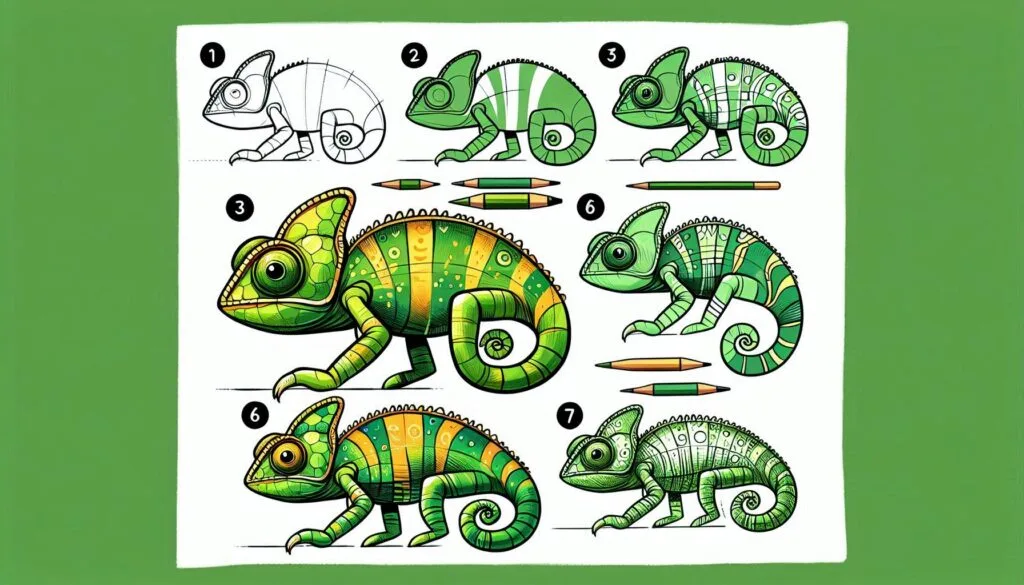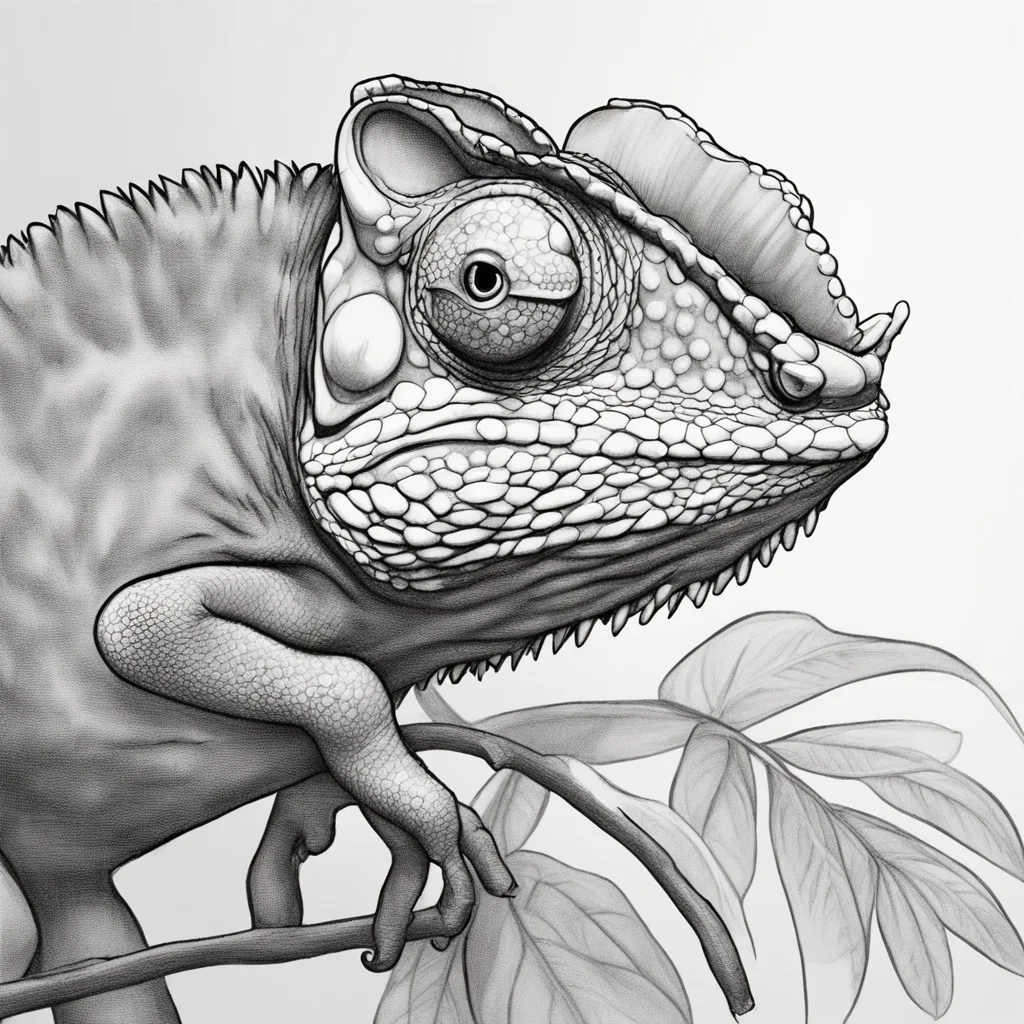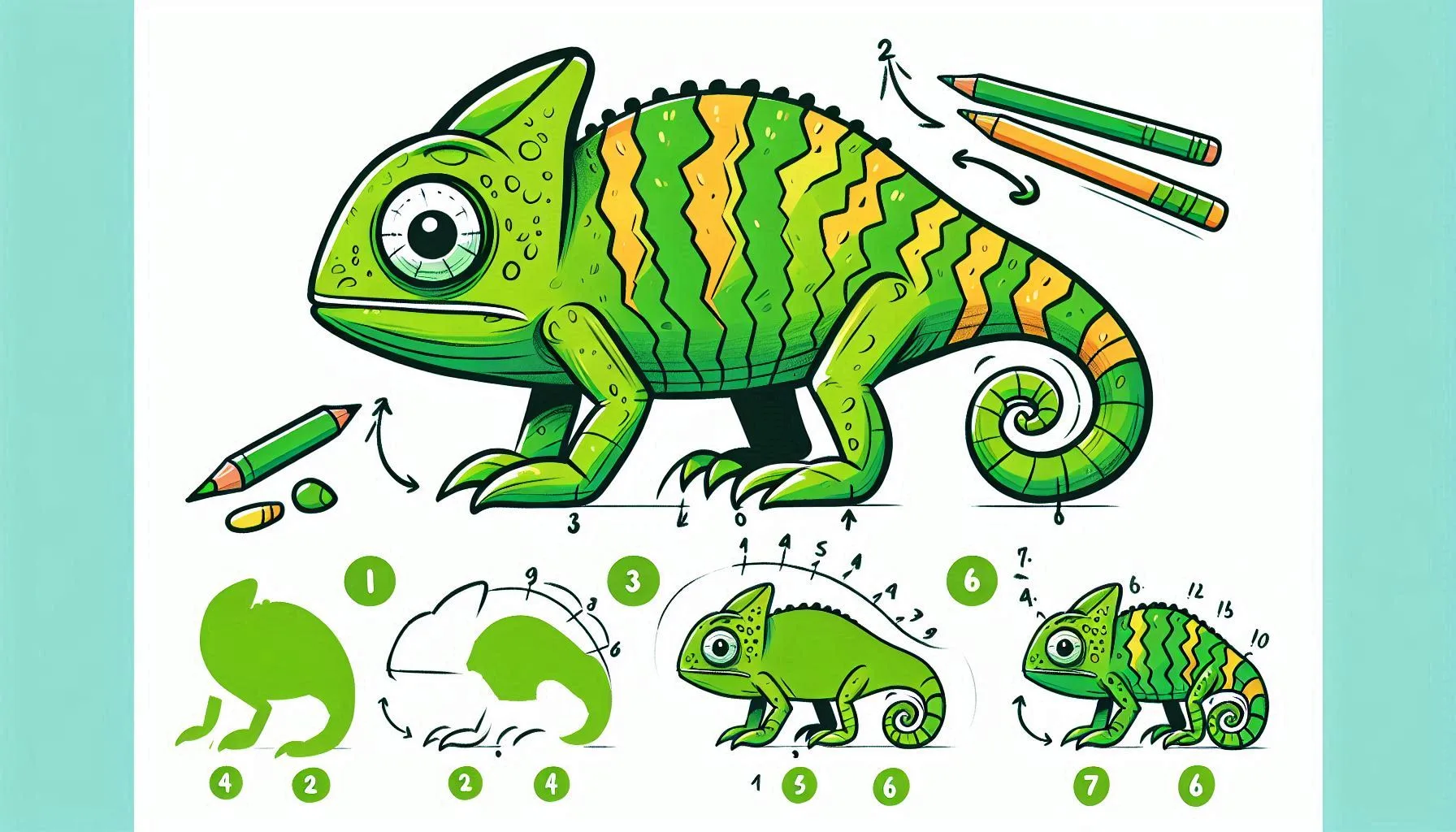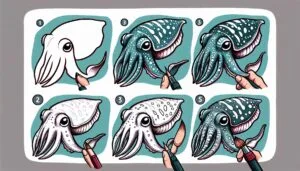Creating a chameleon drawing is an excellent opportunity to delve into the distinct characteristics and vivid hues of this captivating reptile. Chameleons are recognized for their remarkable color-changing abilities, unique body shapes, and tails that can grasp objects. In this guide, we will take you through the process of drawing a chameleon, with a focus on capturing its unique features and adding artistic touches. Let’s embark on this vibrant and imaginative adventure!
The Fascinating Anatomy of Chameleons
Chameleons possess unique characteristics that distinguish them from other reptiles. These include their elongated, coiling tails, zygodactylous feet (with two toes pointing forward and two pointing backward), and their remarkable prehensile tails. Their eyes have the ability to move independently, which contributes to their distinct appearance. By familiarizing yourself with these features, you’ll be able to produce drawings that are both precise and captivating.
The Joy of Capturing Color and Texture
Creating a chameleon drawing requires capturing its vivid colors and captivating textures. Chameleons are well-known for their remarkable ability to change colors, which can be beautifully incorporated into your artwork. This activity is not only enjoyable but also helps improve your abilities in working with vibrant colors and various textures. The more skillfully you capture these characteristics, the more realistic and vibrant your chameleon drawing will appear.
Discovering the Fascinating World of Chameleons Through Art
Chameleons possess not only visually captivating features, but also exhibit distinct behaviors and adaptations. Exploring the unique features and role of chameleons in nature can be a fascinating experience. This theme highlights the educational element of art and the opportunity to explore different aspects of chameleon life through creative expression.
Steps: How to Draw a Chameleon
First, start by sketching the fundamental outline.
Begin by sketching the fundamental outline of the chameleon’s body. Start with a rounded oval or elongated shape for the body. Chameleons possess a body that is somewhat cylindrical in shape, with a gently curved back. Create a smaller oval for the head at one end of the body.
Next, let’s move on to adding the head and facial features.
Place the head at the front of the body. The head has a slightly triangular shape and a snout that is rounded. Place two large, circular eyes on each side of the head. Chameleons have the remarkable ability to move their eyes independently, allowing them to adjust their position accordingly. Create a small, curved line to represent the mouth.
Step 3: Now let’s move on to drawing the legs and feet.
Chameleons possess strong legs and feet with a unique structure. Sketch the front legs as compact, gently arched forms that emerge from the body. Add two toes facing forward and two toes facing backward to each foot. When drawing the hind legs, it’s important to make them slightly larger and position them a bit further back. Include the feet with the same toe arrangement that are specialized for grasping.
Step 4: Now let’s move on to drawing the tail.
Chameleons possess a remarkable prehensile tail that gracefully coils into a spiral. Begin drawing the tail from the back of the body, shaping it into a spiral. The tail should have a robust appearance and gradually narrow towards the tip. Ensure that it is appropriately sized and has a design that allows for a secure grip on branches or other surfaces.
Step 5: Enhance the Visual Appeal
To capture the unique texture of the chameleon’s skin, create delicate, curved lines and intricate patterns across its body. Chameleons frequently have a textured surface, so try incorporating some subtle bumps or ridges into your drawing. Include additional information about the scales on the feet and the subtle curves of the tail.
Step 6: Perfecting the Form
Opt for a darker pencil or pen to carefully trace over your sketch and enhance the chameleon’s shape. Refine the contours of the body, head, legs, and tail. Make sure the body segments, legs, and tail are clearly defined and in proper proportion. Remove any unnecessary guidelines or overlapping lines to tidy up your drawing.
Step 7: Add some color to your chameleon
Now it’s time to add some vibrant hues to your chameleon! Chameleons display a diverse array of colors, allowing you to select from a variety of vibrant greens, blues, oranges, and more. Include various hues to showcase their ability to change colors and display intricate patterns. Opt for brighter hues to bring out the highlights and deeper tones to create shadows, adding depth and dimension to your artwork. Take note of the different areas of light and shadow in order to give your chameleon drawing a more dynamic and realistic appearance.
Topic 1: The Fascinating Physiology of Chameleons
Exploring the anatomy of a chameleon through drawing allows you to appreciate its distinct features, such as its cylindrical body, prehensile tail, and zygodactylous feet. Understanding these features enables you to create a thorough and precise depiction. Understanding the intricacies of chameleon anatomy can greatly improve your artistic abilities and deepen your understanding of these captivating reptiles.
Theme 2: Exploring the Joy of Capturing Color and Texture
The vibrant colors and unique textures of a chameleon offer a fun and rewarding challenge for artists. Mastering the art of capturing these details requires a touch of creativity and a keen eye for dynamic colors and textures. Have fun creating vibrant and intricate artwork that showcases the chameleon’s stunning colors and patterns.
Theme 3: Discovering the Fascinating World of Chameleons Through Art
Chameleons provide an opportunity to delve into fascinating aspects of reptile life, thanks to their captivating appearance and unique adaptations. Exploring different colors and textures can make your artwork visually engaging and educational. This theme emphasizes the excitement of exploring different aspects of chameleon life through art.
In summary
Drawing a chameleon is a fun and captivating experience that lets you capture the distinct features and vivid colors of this captivating reptile. By following the steps in this guide and paying attention to its anatomy, texture, and colors, you can create a detailed and captivating chameleon drawing. Embrace the joy of the artistic process and let your imagination soar as you create a stunning masterpiece!


Check out this super fun and simple guide to learn how to draw a Komodo dragon with easy step-by-step instructions! This fun tutorial offers easy steps, allowing young creators to dive into their imagination while discovering the wonders of these amazing reptiles!





